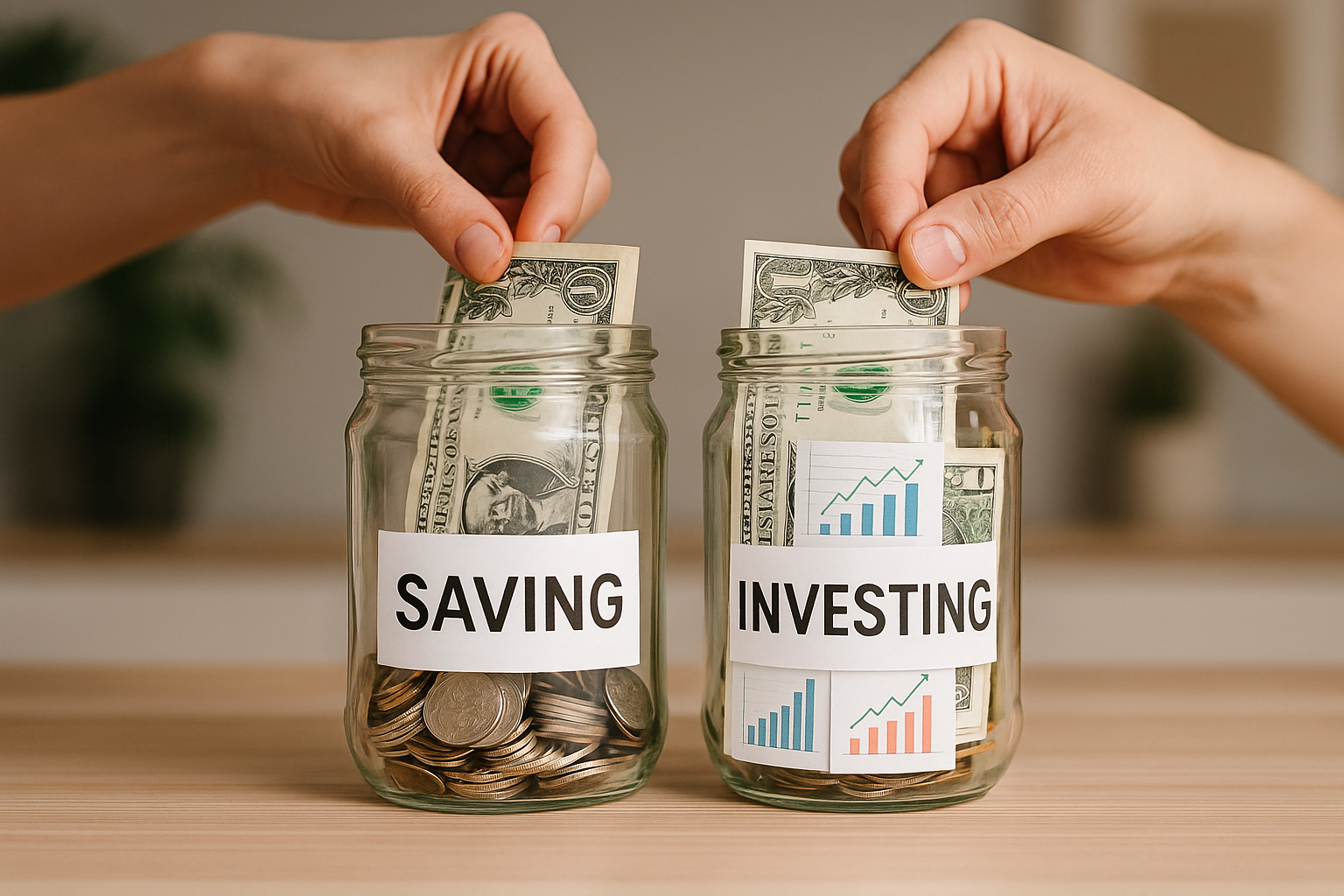Many people use the terms “saving” and “investing” interchangeably, but they serve different purposes in personal finance. Understanding the distinction between the two is crucial for building a balanced financial plan and making informed decisions about your money. This article will help you understand the core differences, when to save, when to invest, and how to do both effectively.
What Is Saving?
Saving refers to putting money aside for short-term needs or emergencies. It typically involves storing funds in a safe and accessible place, such as:
- A traditional savings account
- A high-yield savings account
- A money market account
The primary goal of saving is to preserve capital rather than grow it. Savings are meant to be available when you need them, not exposed to risk.
Benefits of Saving
- Liquidity: Funds are easy to access in case of emergencies
- Safety: Minimal risk of losing money
- Predictability: Returns are consistent, even if modest
Ideal Uses for Savings
- Emergency fund (3–6 months of expenses)
- Upcoming expenses (vacation, car repair, home purchase)
- Short-term goals (less than 2–3 years away)
What Is Investing?
Investing is the process of using your money to buy assets with the goal of generating a return. These assets might include:
- Stocks
- Bonds
- Mutual funds
- Exchange-traded funds (ETFs)
- Real estate
Investing involves some level of risk but also offers the potential for greater long-term growth compared to saving.
Benefits of Investing
- Higher returns: Historically, investments like stocks have outperformed savings accounts over time
- Wealth building: Investing is essential for growing your net worth and achieving long-term financial goals
- Passive income: Certain investments, such as dividend stocks or real estate, generate recurring income
Ideal Uses for Investing
- Retirement savings
- Education funds
- Long-term goals (more than 3–5 years away)
- Building wealth over time
Key Differences Between Saving and Investing
| Feature | Saving | Investing |
|---|---|---|
| Purpose | Short-term security | Long-term growth |
| Risk Level | Very low | Moderate to high |
| Returns | Low and predictable | Potentially higher, but variable |
| Liquidity | Highly liquid | May require time to access |
| Best for | Emergencies, short-term goals | Retirement, wealth-building |
When Should You Save?
Saving should be your first priority if:
- You don’t have an emergency fund yet
- You plan to make a purchase in the next 1–2 years
- You’re risk-averse or in an unstable financial situation
You should always have a financial cushion before you begin investing.
When Should You Invest?
Invest once you:
- Have a solid emergency fund
- Are free from high-interest debt
- Are saving for goals at least 3–5 years away
- Want your money to work harder for you
Even small amounts invested consistently can compound over time and grow significantly.
How to Balance Saving and Investing
The key is to do both — in the right order.
- Start with an emergency fund
- Pay off high-interest debt
- Begin investing for the future
- Continue saving for short-term needs
You might follow a strategy like this:
- 20% of your income goes to savings
- 15% to long-term investments
- The rest covers your needs and wants
Conclusion: Know the Role of Each in Your Financial Plan
Both saving and investing are essential for financial health, but they serve different purposes. Saving protects your money for immediate needs, while investing grows your wealth over time. Mastering both allows you to prepare for the unexpected and build the life you want in the future.
Image Prompt for AI Generation:
A realistic image showing two glass jars side by side on a wooden table, one labeled “Saving” filled with coins and cash, and the other labeled “Investing” containing miniature stock market charts and small dollar bills. A hand is placing money into each jar, symbolizing balance in financial planning.
